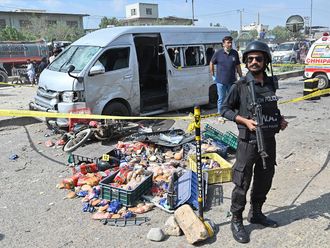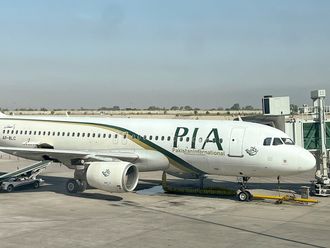New Delhi: As New Delhi raged over the attack by Pakistani troops on Tuesday claiming the lives of Indian soldiers, two newspapers have talked about a relatively innocuous incident sparking the recent series of murderous clashes between India and Pakistan along the Line of Control (LoC) explaining that it began with a grandmother crossing into Pakistan-administered Kashmir to be with her sons in September last year.
According to the Hindu newspaper, Reshma Bi, 70, left the village of Charonda, near Uri, to live the rest of her life with her sons and grandchildren across LoC on September 11. The sons of Reshma had crossed into Pakistan -administered Kashmir many years ago, to evade a probe into their alleged role in cross-border trafficking.
The couple – Reshma Bi and her husband Ibrahim Lohar - had remained in Charonda since then. It could not be predicted that Reshma’s hope of living her last years with her family would lead to the worst ever violation of the ceasefire that has mostly held since 2003 on the LoC that divides Jammu & Kashmir between India and Pakistan.
The Hindu noted that Reshma’s September 11 flight highlighted vulnerabilities in defences along this stretch of the LoC. The incident led to the construction of observation bunkers on the northern reaches of the LoC within a week after Reshma’s departure, which then sparked off a spiral of violence that culminated in the brutal killing of Lance-Naik Sudhakar Singh and Lance-Naik Hemraj in an ambush on Tuesday.
Notably, the construction violated the terms of the LoC ceasefire which India and Pakistan agreed in 2003. Pakistani troops protested against it. However, the Indian side refused to stop work, arguing that the posts faced out towards the village, posing no threat to Pakistan.
The Hindu newspaper further said that tension between the two sides began to rise early in October. Pakistan reportedly even made announcements over a public address system, demanding that Indian troops end the construction work. And the announcement followed shells. Pakistani troops, says the daily, fired mortar and high-calibre automatic weapons at Indian forward positions. The gunfire killed three villagers.
Quoting military sources, the newspaper said that in the weeks leading up to the New Year, hardly a week went by without occasional shots being fired at troops headed to the new observation posts. On January 6, Pakistan claimed that Indian troops raided its post. A Pakistani soldier reportedly died in the incident. Pakistan, sort of, retaliated by shooting dead and beheading two Indians soldiers in a gory replay of the 1999 Kargil killings.
Likewise, the mainstream DNA newspaper, quoting sources, has reported that the Pakistani attack was in all likelihood a retaliation for the attack carried out by 9th Maratha Light Infantry (MLI) unit. The commander of the 161 brigade, stationed in the Churchunda sub-sector, Brigadier Gulab Singh Rawat, had decided to take a very aggressive posture.
He asked the commanding officer of 9 MLI to take “proactive action”, to launch a quick raid against a post that was harassing Indian positions. The successful Indian raid led to the death of a Pakistani non-commissioned officer and escalated tensions across the LoC.












